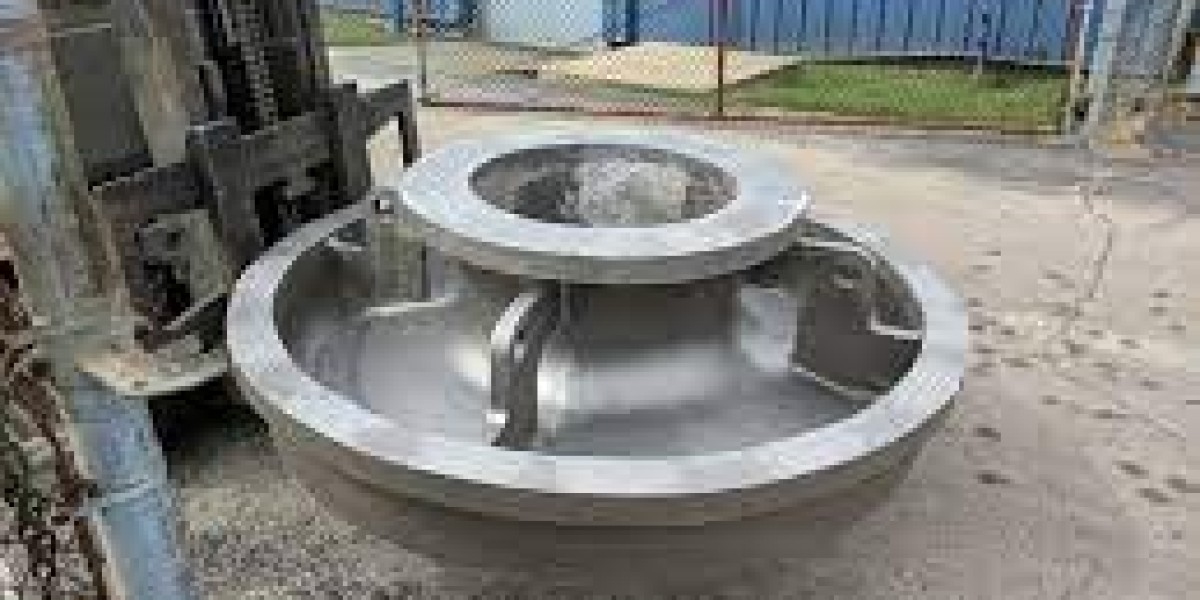Introduction:
Steel casting is a widely used manufacturing process that involves pouring molten steel into a mold to create complex shapes and components. This process provides numerous advantages, such as high strength, durability, and the ability to produce intricate designs. In this article, we will delve into the world of steel casting, exploring its applications across various industries, understanding its advantages, and examining the casting process involved.
- Understanding Steel Casting:
Steel casting is a process of manufacturing components by pouring molten steel into a pre-designed mold. The molten steel solidifies within the mold, taking its shape, and is then removed once it has cooled and solidified completely. The resulting castings are then machined, finished, or assembled as required for the specific application.
- Applications of Steel Casting:
2.1. Automotive Industry: Steel casting finds extensive use in the automotive industry. It is used to manufacture critical components such as engine blocks, cylinder heads, crankshafts, transmission cases, and suspension components. Steel casting provides the required strength and durability for these parts to withstand the demanding operating conditions of vehicles.
2.2. Machinery and Equipment: In machinery and equipment manufacturing, steel casting is employed to produce a wide range of components, including gears, pulleys, valves, pumps, and hydraulic cylinders. These components require high precision and excellent mechanical properties, which can be achieved through steel casting.
2.3. Construction and Infrastructure: Steel castings are used in the construction industry for various applications. They are utilized to produce heavy machinery parts, structural components, and fittings for infrastructure projects like bridges, tunnels, and buildings. Steel casting provides the necessary strength and resistance to withstand heavy loads and harsh environmental conditions.
2.4. Energy and Power Generation: Steel castings play a crucial role in the energy and power generation sector. They are utilized in manufacturing components for turbines, valves, generators, and other equipment used in power plants, oil and gas facilities, and renewable energy installations. Steel casting ensures the reliability and longevity of these critical components.
2.5. Aerospace and Defense: In the aerospace and defense industries, steel castings are used to create components for aircraft, missiles, tanks, and other defense equipment. These castings offer high strength-to-weight ratios, corrosion resistance, and excellent performance under extreme conditions, making them suitable for aerospace and defense applications.
- Advantages of Steel Casting:
3.1. Design Flexibility: Steel casting allows for intricate and complex designs that are difficult or impossible to achieve through other manufacturing processes. It enables the production of parts with fine details, undercuts, thin walls, and internal cavities, providing designers with greater freedom and creativity.
3.2. Strength and Durability: Steel castings exhibit exceptional mechanical properties, including high strength, toughness, and wear resistance. This makes them ideal for applications that require components to withstand heavy loads, extreme temperatures, and harsh environments without compromising performance.
3.3. Cost-effectiveness: Although steel casting may involve higher initial costs compared to other manufacturing methods, it offers long-term cost savings due to its durability and extended service life. Steel castings require minimal maintenance and replacement, reducing downtime and overall operational expenses.
3.4. Material Variety: Steel casting allows the use of various steel alloys, providing a wide range of material options to meet specific requirements. Different steel grades can be chosen based on factors such as strength, corrosion resistance, heat resistance, and magnetic properties, ensuring suitability for diverse applications.
3.5. Size and Weight: Steel casting enables the production of both small and large components, ranging from a few grams to several tons. It offers the advantage of producing complex and sizable parts as a single unit, eliminating the need for welding or joining multiple pieces together.
- The Steel Casting Process:
The steel casting process involves several stages:
4.1. Pattern Making: The casting process begins with the creation of a pattern, which is a replica of the final component. The pattern is usually made from wood, plastic, or metal and is used to produce the mold cavity.
4.2. Mold Preparation: The pattern is then embedded in a molding material, such as sand or ceramic, to create the mold. The mold consists of two halves, the cope and the drag, which are joined together to form the complete cavity.
4.3. Melting and Pouring: The steel is melted in a furnace, typically an electric arc furnace or an induction furnace. Once the steel reaches the desired temperature and composition, it is poured into the mold cavity through a gating system, which ensures a controlled flow of the molten metal.
4.4. Solidification and Cooling: As the molten steel is poured into the mold, it begins to solidify and take the shape of the cavity. The solidification process is carefully controlled to avoid defects and ensure uniformity in the casting. Cooling rates are managed to prevent internal stresses and maintain the desired mechanical properties.
4.5. Shakeout and Finishing: After the casting has solidified and cooled, the mold is removed by shaking or breaking it. The casting is then cleaned to remove any residual molding material. Depending on the application, additional processes such as machining, heat treatment, surface finishing, and quality inspection may be performed to achieve the desired specifications.
Conclusion:
Steel casting is a versatile manufacturing process that offers numerous advantages for the production of complex and durable components. Its applications span across industries such as automotive, machinery, construction, energy, aerospace, and defense. With its design flexibility, strength, durability, and cost-effectiveness, steel casting continues to be a preferred choice for manufacturers seeking high-quality and reliable components. The steel casting process, from pattern making to finishing, involves careful planning and control to achieve precise and defect-free castings. With ongoing advancements in technology and materials, steel casting is likely to remain a vital method for producing critical components in various sectors.








